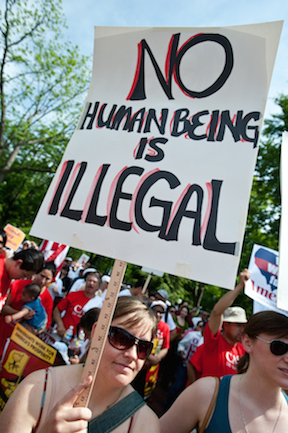Some states spurn migrants. The Rust Belt wants them.
From the Washington Post.
PITTSBURGH — This city jumped into action multiple times recently amid rumors that buses of migrants would be arriving here from the U.S.-Mexico border. The emergency operations center and Red Cross were activated, temporary camps for men and women and children were identified, and interpreters from throughout Southwestern Pennsylvania were put on standby.
PITTSBURGH — This city jumped into action multiple times recently amid rumors that buses of migrants would be arriving here from the U.S.-Mexico border. The emergency operations center and Red Cross were activated, temporary camps for men and women and children were identified, and interpreters from throughout Southwestern Pennsylvania were put on standby.
The buses never arrived, a setback for Pittsburgh-area leaders who are out to prove that just about anyone is welcome in their neighborhoods.
“We are not here to reject any immigration. As a matter of fact, we want to make this the most safe, welcoming, thriving place in America, and you can’t do that without immigration,” Pittsburgh Mayor Ed Gainey (D) said in an interview, adding that he does not make distinctions on the basis of someone’s immigration status or how the person entered the country. “Why wouldn’t we want them?”
The reaction of Gainey, and of many other residents in these hilly, ethnically distinct neighborhoods built by the nation’s initial waves of immigrants, contrasts sharply with the stance being taken by leaders in New York and other East Coast cities as the rift over where, how quickly and at whose cost tens of thousands of migrants should resettle in the United States.
In major cities such as Chicago and Boston, the influx of migrants has sparked unease as city leaders struggle to find temporary housing and social services to handle the numbers arriving. But as Gainey’s friendly tone in Pittsburgh proves, the inflow of migrants is seen as a difficulty in a relatively small number of communities, leaving vast stretches of the country wondering why more people are not showing up there. In cities throughout the Rust Belt and Midwest in particular, many local leaders still view foreign-born residents as lifelines for rejuvenating the population, enhancing the workforce and transforming local cultures that have yet to catch up to the breadth of the nation’s diversity.
In recent months, communities including Detroit; Dayton, Ohio; and Erie, Pa. — all places experiencing population loss — have been working with outside experts on how to transform city services to meet the needs of immigrants. One city, Topeka, Kan., is being even more aggressive, offering legal migrants up to $15,000 to move there.
In recent months, communities including Detroit; Dayton, Ohio; and Erie, Pa. — all places experiencing population loss — have been working with outside experts on how to transform city services to meet the needs of immigrants. One city, Topeka, Kan., is being even more aggressive, offering legal migrants up to $15,000 to move there.
The different approaches are sparking a debate over just what it means to be tolerant and hospitable, and it has left some city leaders befuddled over why their communities are being overlooked by immigrants. Those questions are expected only to assume greater urgency next year when the presidential election converges on the Rust Belt, elevating tensions over immigration while also sparking discussions over economic problems such as persistent labor shortages.
In the past 18 months, Texas Gov. Greg Abbott (R) has bused more than 50,000 migrants to Washington, New York, Chicago, Philadelphia and Los Angeles — intentionally targeting Democratic-majority areas that he contends turn a blind eye to the costs of what he describes as unchecked immigration.
Democrats nationally are increasingly divided over how to respond, with some key party leaders complaining of depleted local budgets and strained tensions over where to house the migrants.
In the past 18 months, Texas Gov. Greg Abbott (R) has bused more than 50,000 migrants to Washington, New York, Chicago, Philadelphia and Los Angeles — intentionally targeting Democratic-majority areas that he contends turn a blind eye to the costs of what he describes as unchecked immigration.
Democrats nationally are increasingly divided over how to respond, with some key party leaders complaining of depleted local budgets and strained tensions over where to house the migrants.
In September, New York Gov. Kathy Hochul (D) bluntly told migrants to “go somewhere else” because the state had run out of places to house them. New York Mayor Eric Adams (D) has said the issue will “destroy” his city. Massachusetts Gov. Maura Healey, also a Democrat, has pleaded for more federal assistance to help with a wave of migrants arriving in that state.
Yet it is Pittsburgh, a city expected to be at the center of the 2024 election, that offers a preview of opportunities and tensions that could exist, should the domestic migration of immigrants spread to a new tier of states and cities in the coming months.
Since the collapse of the steel industry, Pittsburgh has transformed itself into a hub for health care, as well as nurturing a growing technology base. But it’s still a city packed with gritty neighborhood bars and blue-collar workers eager to speak about the weariness of shift work.
Read more at the Washington Post
Read more at the Washington Post
